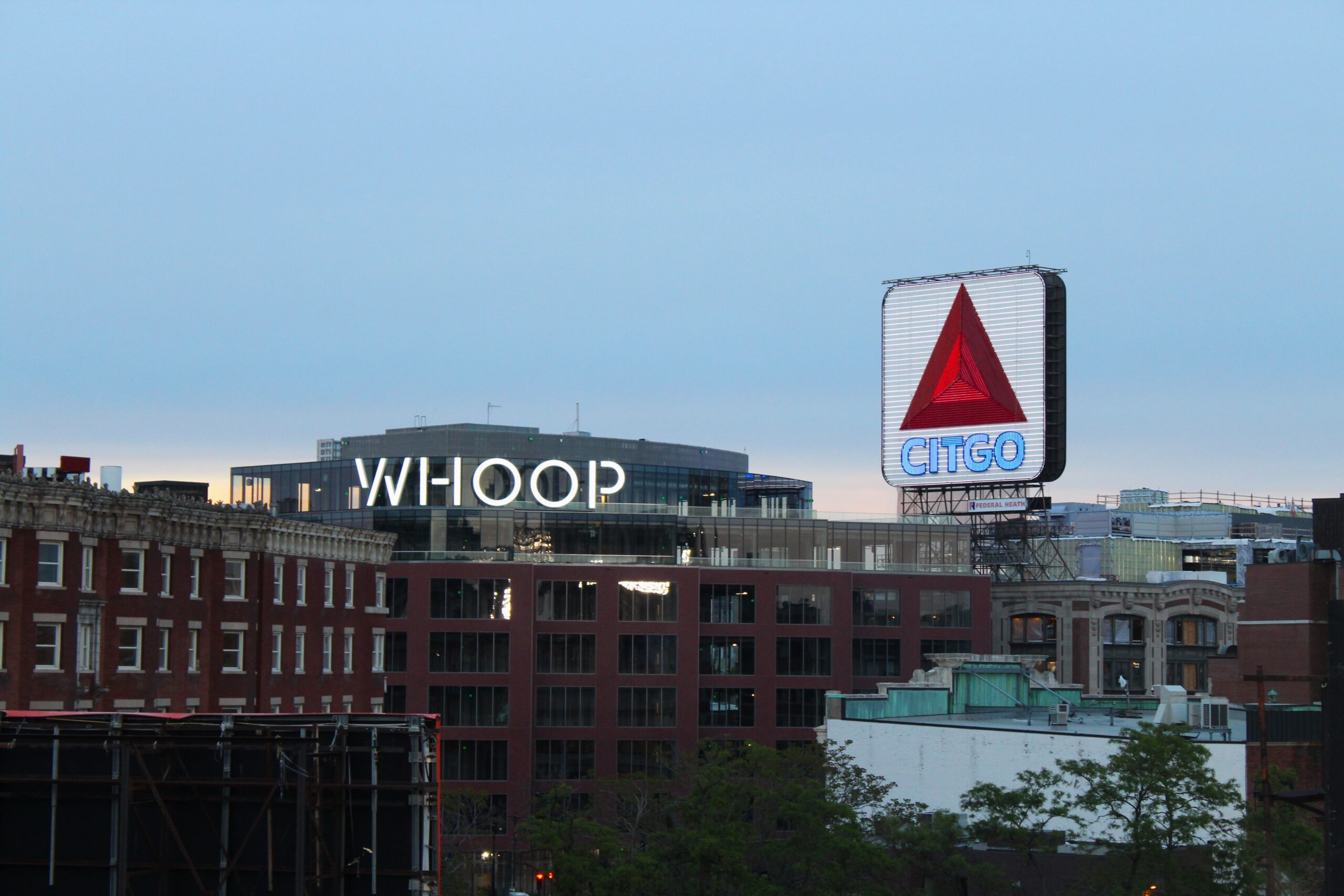By Grant Welker
It wasn’t long ago that the Prudential Tower stood out as one of a small handful of buildings in Boston’s skyline to carry a company name or logo. The insurer’s all-caps name across the top of the Back Bay office tower continues to be a city landmark.
But today when you look out across the city and beyond, to Cambridge and Somerville, you can see dozens of logos — from Google to Akamai, and from Puma to Mass General Brigham.
Four new ones have been installed just this year: the private equity firm HarbourVest Partners, the pharmaceutical giant Eli Lilly, the automotive shopping site CarGurus, and the life sciences company Foundation Medicine have all affixed their names atop local buildings.
HarbourVest’s sign arrived late this summer, replacing State Street’s at the top of the 1 Lincoln St. tower near South Station. State Street’s name moved to the top of its new headquarters at One Congress, at the site of the former Government Center garage. Businesspeople who’ve been around a while will remember State Street’s name as adorning the top of 225 Franklin St. until 2001, when it moved to Lincoln Street.
While HarbourVest isn’t scheduled to move into the Lincoln Street tower until 2025, its logo already can be seen by commuters from the South Shore.
New corporate additions
Over the summer, Indianapolis-based drugmaker Eli Lilly and Co. added its red-script “Lilly” to the Fort Point Channel skyline this summer, forming a visual companion to the “Boston Wharf Co.” neon sign across the street. The company is building its Institute for Genetic Medicine in a 12-story building on Necco Street, once planned to house General Electric’s headquarters and logo. The site is scheduled to open next year with 700 workers.
The logo for car-shopping website CarGurus is visible from Cambridge or heading into the city from the west via the Massachusetts Turnpike at the end of Boylston Street along Massachusetts Avenue. The company’s headquarters building is being built over the Pike, which will also house the North American headquarters for Lego.
Foundation Medicine’s logo is going up at 400 Summer St. in the Seaport. The company expects to move into its new headquarters before the end of the year from its current home in Kendall Square.
Meanwhile, ever since the 60-story John Hancock Tower lost its namesake tenant in 2015 and then was renamed 200 Clarendon, the insurer with the historic Boston name has only showcased that legendary script at Fenway Park. That was until this past summer, when it got city approval to post its former ballpark sign atop its U.S. headquarters building in Back Bay on 200 Berkeley St.
‘Your most valuable asset’
Companies put their logos on the skyline for a variety of reasons that go beyond name recognition or earning new customers, according to Paul Fombelle, a marketing professor at Northeastern University.
“You’re announcing to the neighborhood that you’re here,” he said. “Your brand is your most valuable and unique asset. Companies can copy just about anything else these days.”
It’s a form of advertising that’s not just meant to attract new clients, but to keep existing ones, Fombelle added. “They’re reminders,” he said. “They’re not sales pitches.”
They can also help attract employees.
“If I have my name on a building, I’m clearly legit,” said Patricia Hambrick, a marketing professor at Boston University. There’s also an ego factor in play for such companies, she said: “It’s ‘We want to show the world we’re here.'”
As for which of the area’s new corporate logos might become Boston icons on par with the Prudential or the Citgo signs, that depends on a company’s longevity, Hambrick said. The Prudential name, like Citgo’s, stood for generations to become practically synonymous with Boston, even if the companies aren’t based locally.
Hambrick called the Pru’s long tenure atop Boston’s second-tallest building an aberration that puts it in the company of those like the PanAm building New York. The office tower was renamed after MetLife three decades ago, yet the initial name endures for many.
Ultimately, corporate logos are marketing moves, the effectiveness of which have always been difficult to measure.
“It’s much more art than science,” Fombelle said.


